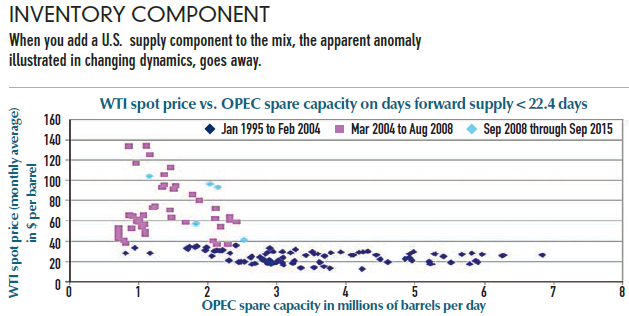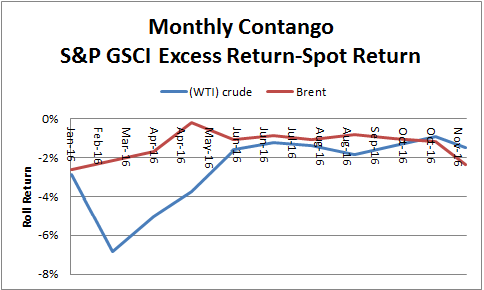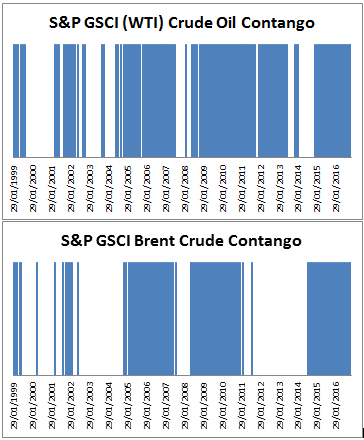November was sandwiched between two eventful surprises, starting with the election and ending with OPEC’s agreement to cut output, that resulted in a month filled with big moves, mostly positive. The Dow Jones Commodity Index (DJCI) Total Return for the month was 2.3%, bringing its year-to-date (YTD) total return to 11.8%. The S&P GSCI Total Return for the month was 2.6%, bringing its YTD total return to 6.4%, on pace for its best year since 2009 and its first positive year since 2012.
Inside the S&P GSCI Total Return, 14 of 24 commodities were positive in November with the S&P GSCI Copper Total Return gaining 20.0%, its 7th best month in history since 1977 and its best month since April 2006. One more single commodity that had a remarkably strong month is the S&P GSCI Feeder Cattle Total Return gaining 10.8%, marking its 3rd best month in history since 2002 and its best month since June 2011. Also, the S&P GSCI Crude Oil Total Return gained 9.3% on the last day of November, posting its 14th best day ever since Jan. 2, 1987 and best day since Feb. 12, 2016. The S&P GSCI Cocoa Total Return lost 11.9% in November, making it the worst single commodity for the month. Though gold was not the worst single commodity in November, the S&P GSCI Gold Total Return lost 8.0% that was its 18th worst month and worst month since June 2013.
On a sector level, 3 of 5 were positive in November with the S&P GSCI Industrial Metals Total Return gaining 10.4% and the S&P GSCI Precious Metals Total Return losing 8.0%. This is the greatest outperformance of industrial metals over precious metals in over 26 years, since March 1990.

Interestingly, the last time the premium was as big in 1990, oil saw one of its biggest spikes in history that marked a bottom from oil. While oil had as big as a spike this past Feb. that marked the bottom, these two spikes in the context of history happened relatively close together. While the S&P GSCI Total Return is recovered 26.5% from its bottom earlier this year, past recoveries have had much greater returns. For example the recovery in 1990, returned about 300%.
One concern remains about aggregate demand that would need to drive a true bull market for commodities. The rise in copper alone does not necessarily indicate an economic recovery, but grains and gas tend to do well with Republican presidencies that can drive inflation. It is possible that inflation from commodities may not coincide with gdp growth but if there is an increase in infrastructure growth that creates jobs then both copper and growth may rise. The OPEC cut might mask sluggish demand in its price formation and also many miners have already cut spending that may be behind this spike in industrial metals. From this it is possible supply is still the driving force in this recovery and whether it continues may hinge on demand in conjunction with macro factors like interest rates and the dollar.
The posts on this blog are opinions, not advice. Please read our Disclaimers.

















































